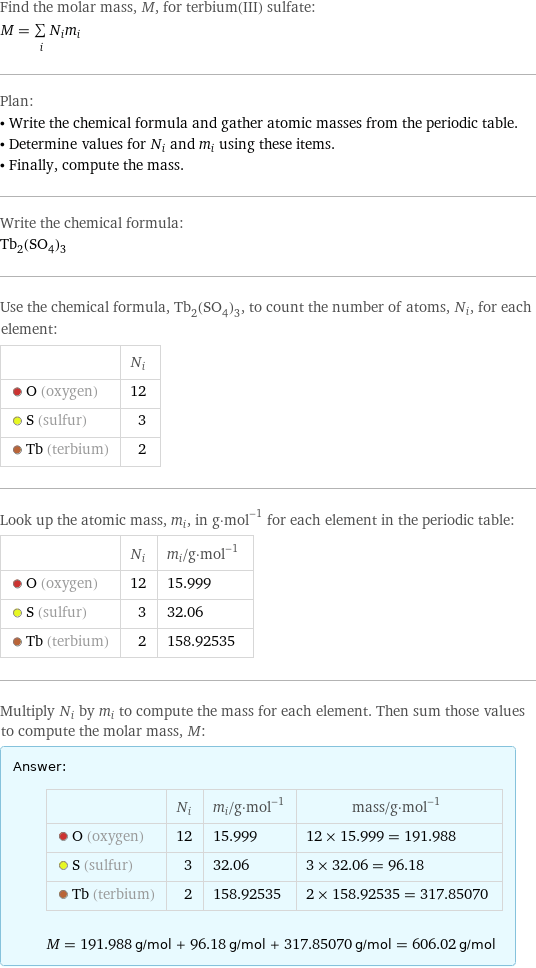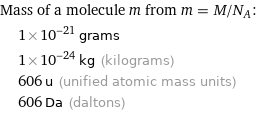Input interpretation

terbium(III) sulfate | molar mass
Result

Find the molar mass, M, for terbium(III) sulfate: M = sum _iN_im_i Plan: • Write the chemical formula and gather atomic masses from the periodic table. • Determine values for N_i and m_i using these items. • Finally, compute the mass. Write the chemical formula: Tb_2(SO_4)_3 Use the chemical formula, Tb_2(SO_4)_3, to count the number of atoms, N_i, for each element: | N_i O (oxygen) | 12 S (sulfur) | 3 Tb (terbium) | 2 Look up the atomic mass, m_i, in g·mol^(-1) for each element in the periodic table: | N_i | m_i/g·mol^(-1) O (oxygen) | 12 | 15.999 S (sulfur) | 3 | 32.06 Tb (terbium) | 2 | 158.92535 Multiply N_i by m_i to compute the mass for each element. Then sum those values to compute the molar mass, M: Answer: | | | N_i | m_i/g·mol^(-1) | mass/g·mol^(-1) O (oxygen) | 12 | 15.999 | 12 × 15.999 = 191.988 S (sulfur) | 3 | 32.06 | 3 × 32.06 = 96.18 Tb (terbium) | 2 | 158.92535 | 2 × 158.92535 = 317.85070 M = 191.988 g/mol + 96.18 g/mol + 317.85070 g/mol = 606.02 g/mol
Unit conversion

0.606 kg/mol (kilograms per mole)
Comparisons

≈ 0.84 × molar mass of fullerene ( ≈ 721 g/mol )

≈ 3.1 × molar mass of caffeine ( ≈ 194 g/mol )

≈ 10 × molar mass of sodium chloride ( ≈ 58 g/mol )
Corresponding quantities

Mass of a molecule m from m = M/N_A: | 1×10^-21 grams | 1×10^-24 kg (kilograms) | 606 u (unified atomic mass units) | 606 Da (daltons)

Relative molecular mass M_r from M_r = M_u/M: | 606